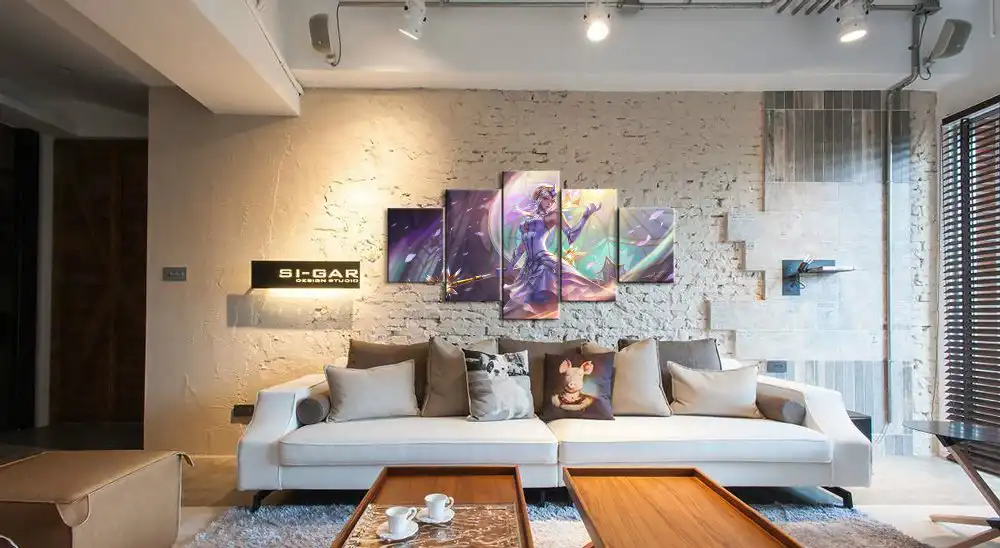
The amount of luminous flux (or perceived power of light) spread over a given area is termed as luminance. Luminance can, therefore, be said to be the amount of light measured over a given plane surface. Luminance is used to calculate the intensity of light required in a room.
Luminance or intensity of light can be measured in either Lux(1 Lux measures 1 lumen per square meter) or foot-candle (1 lumen of light density for every square foot).Lumen is the standard international unit of flux. It is the amount of light that is emitted every second by a uniform source of candela, within a unit solid angle of one steradian.
All the lighting fixtures, bulbs, and other sources that are available to you in the market come along with their lumen value, which is given on their pack. These values are specific for all the different illumination products. The higher the value of the lumen, the more brightness your lighting fixture or bulb will provide. Calculating lumens per square feet can help you know the amount of light that your room interiors are actually getting.You can also calculate the same in lumens per meter square, by using the meter value of the length and breadth of the room instead of foot value.
Calculating the lumen intensity for light and luminance intensity within a room can be very easy. For instance, if you have installed three bulbs in your room with the lumen value of 800 lumens each. the total lumens that the room will get is 800 x 3, which equals to 2400 lumen.
Now suppose that the room is 10-meter-wide and 12 meters long.Its area would be 10 multiplied by 12, which is equal to 120 square meters.
Now you can divide the total lumen value the room is getting (which is 2400 lumens where is this particular example) by the area of the room, which is 120 square meters in this case. The lumen Intensity for your room would be therefore 20 lumens per square meter.
Luminance in full daylight is around 10,752 Lux, while in an overcast day it may reduce to 1075 Lux. During full moon duration,Luminance is .018 Lux while during the overcast night the same can be.0001 Lux.
The luminance considerations are also kept in mind while constructing roads and highways. For instance, the luminance for the expressways should be in between 10 to 8 Lux while for the local roads it can be in between 6 to 3 Lux.
While the outdoors may have significant luminance, it may get reduced greatly within the home/building interiors. For instance, an area inside a building close to a window will have a luminance of around 1000 Lux, while outdoor is it would be around 10,000 Lux on a clear day. When we move further inside the building, the luminance can get reduced to as low as 25 lux. These low levels of intensity of light and luminance can only be overcome through the use of artificial lighting, as there is no way natural light can reach the more interior areas of a building. While many of the activities can be conducted inside the home of building with illuminance level of around 1000 Lux, the more precision related activities may require a luminance level of around 2,000 Lux. Here are some luminance related facts that will show you what activities within the insides of a building require what level of illuminance.
Apart from the quantity of light, there are also other factors that can affect illumination. These include quality of the incident light on a surface, amount of visual glare and flicker, shadows, and contrast among others. Different kinds of buildings and different interiors may require a different level of illumination. The professional, learning, work operational, entertainment, and other kinds of circumstances and situations do not require the same level or intensity of luminance. Therefore, the factors stated above need to be adjusted and manipulated so that the right luminance level is reached within a particular building or home area. Illumination can be optimized in lieu of the conditions/aspects including security, operations, safety, and emergency among others.
The lumination and lighting solutions not only address the luminance demands nowadays but are also manufactured and installed to address other needs as well. These may include energy efficiency, maintainability, cost, durability, and others.
Apart from calculating the illumination required in a room, you can also know the wattage capacity of the bulbs or lights you should use in your homes. To know the figure, multiply the length and breadth of the room.The value you get (the area) should be again multiplied by 1.5. The value you get now is the amount of Wattage That is required for illuminating the room interiors. If you are using the 60-Watt bulbs, divide the end figure you obtain now by 60 to know the number of bulbs that need to be installed in the room.Some areas may require greater intensity of light and these may include your homework or professional desk, makeup area,or the counters. In these cases, you need to replace 1.5 by 2.5 in the formula above.
It is important to have the right kind of luminous intensity are illumination within a room interior. For activities like reading, writing, pc/laptop work, intricate works, and other professional or personal tasks that are visual in nature, adequate luminance is required. When proper illumination is absent the eyes may get under strain,which can also aggravate to be a major health issue. The quality of light and the amount of it remains an important factor, but other factors should not be neglected. Excessive flicker may impact viewership adversely, but you also need to consider glare that may again cause strain in eyes. The best illumination ratio and figure not only improve your productivity but also keeps the eyes healthy and safe.

Lorem ipsum dolor sit amet, consecteg adipisicing elit sed do eius tempor incididunt ut lab et dolore magna aliqua. Ut enim ad minikl veniam, quis nostrud exercitatio.

Lorem ipsum dolor sit amet, consectetur adipisicing elit, sed do eiusmodl tempor incididunt ut labore et dolore
Anthony Stephens